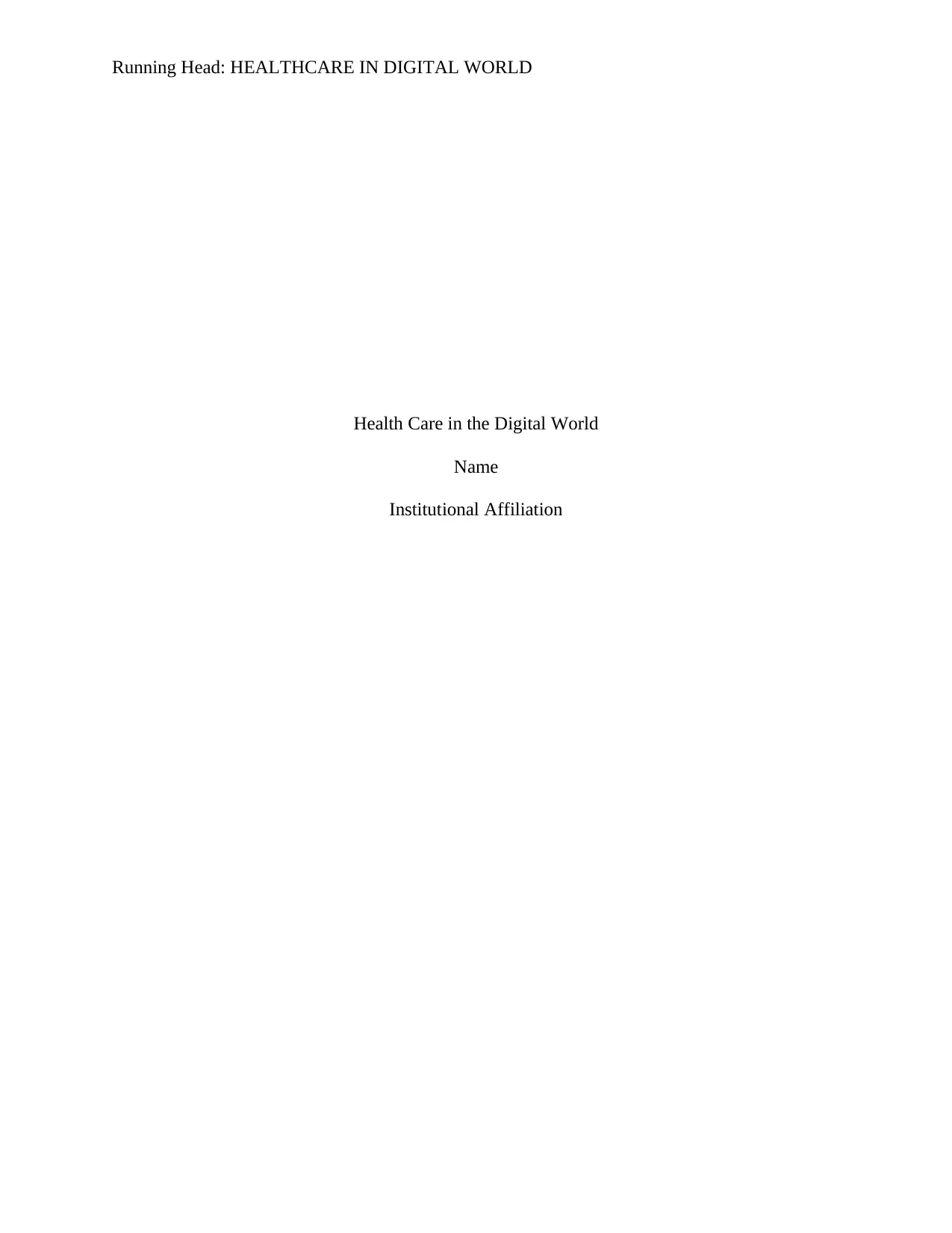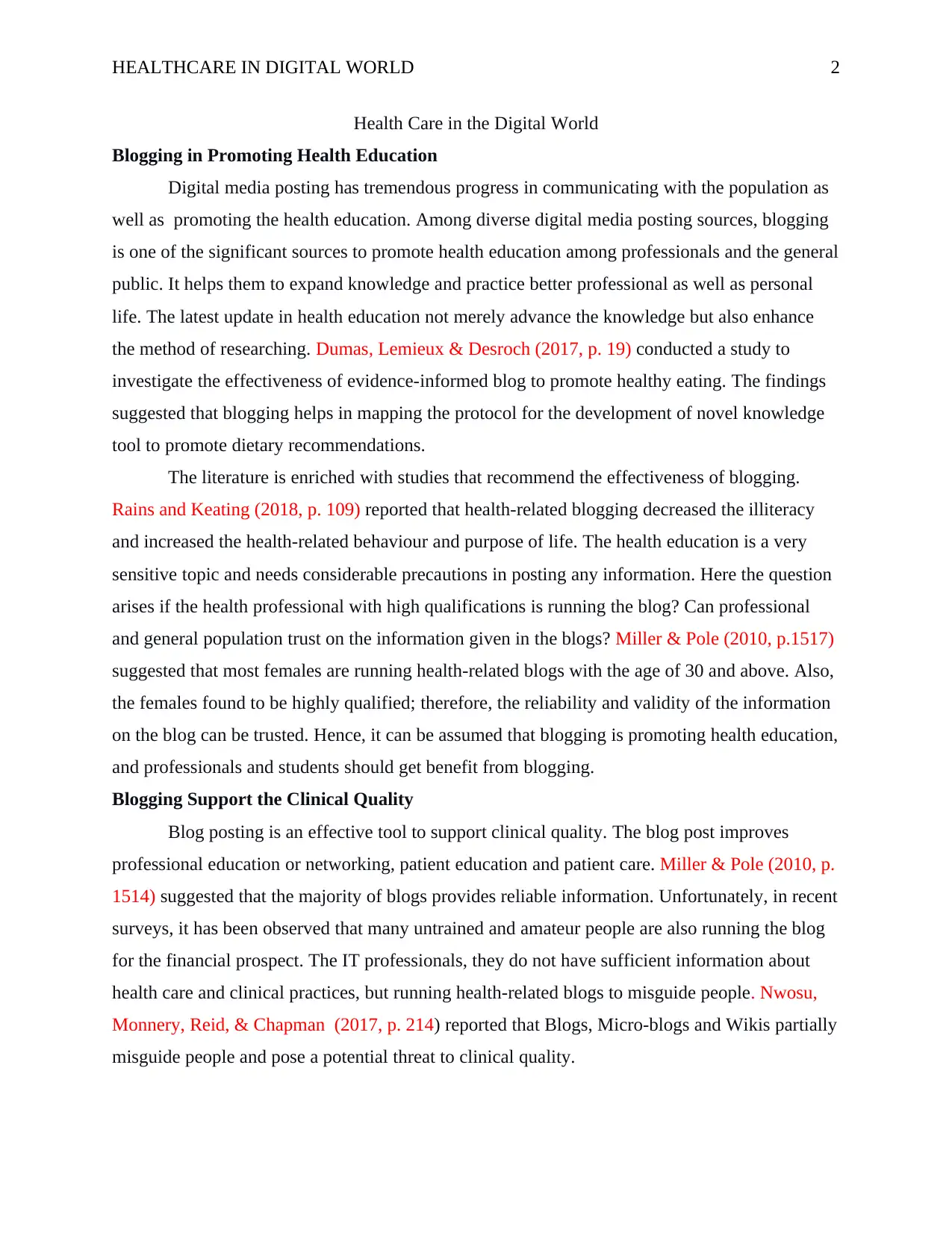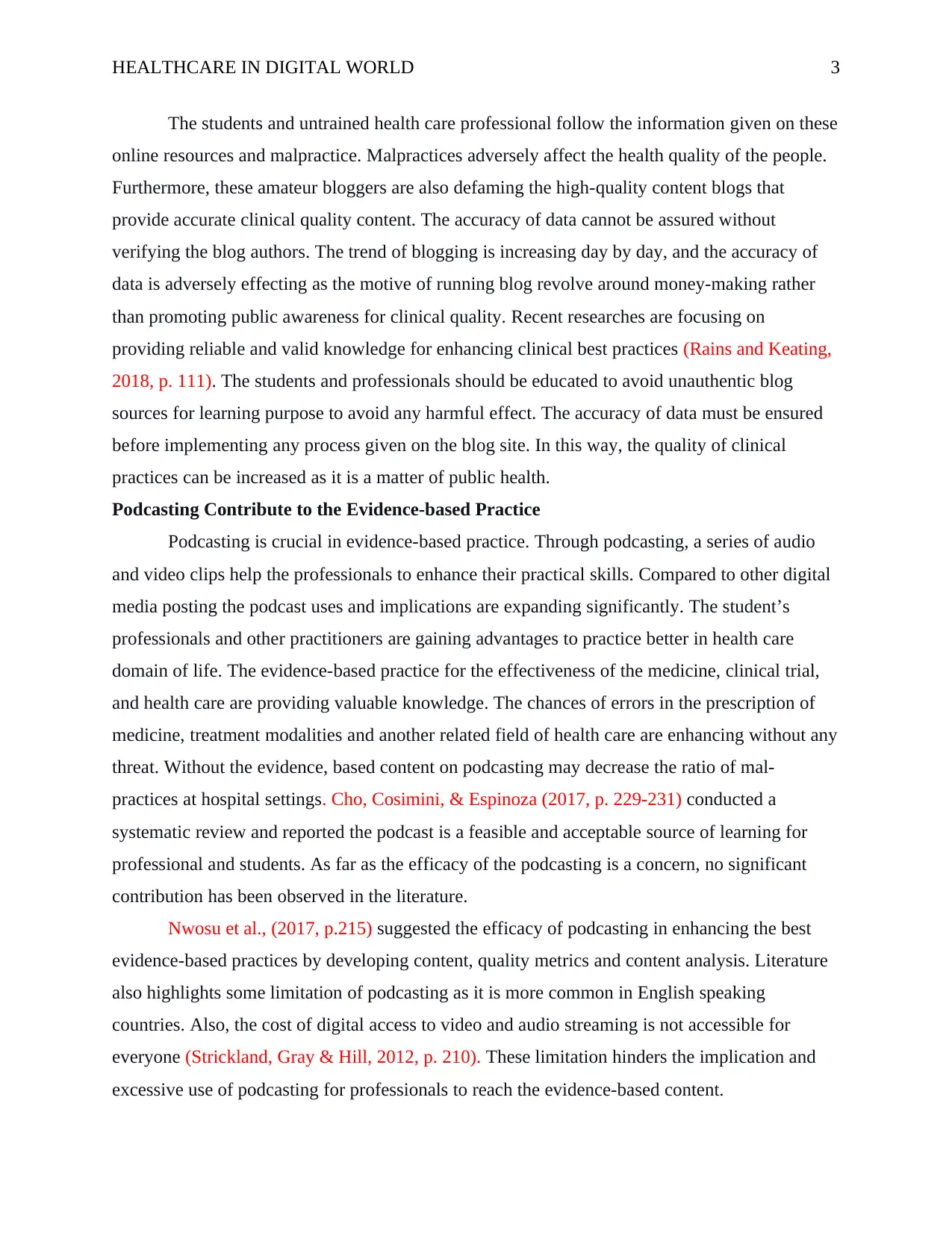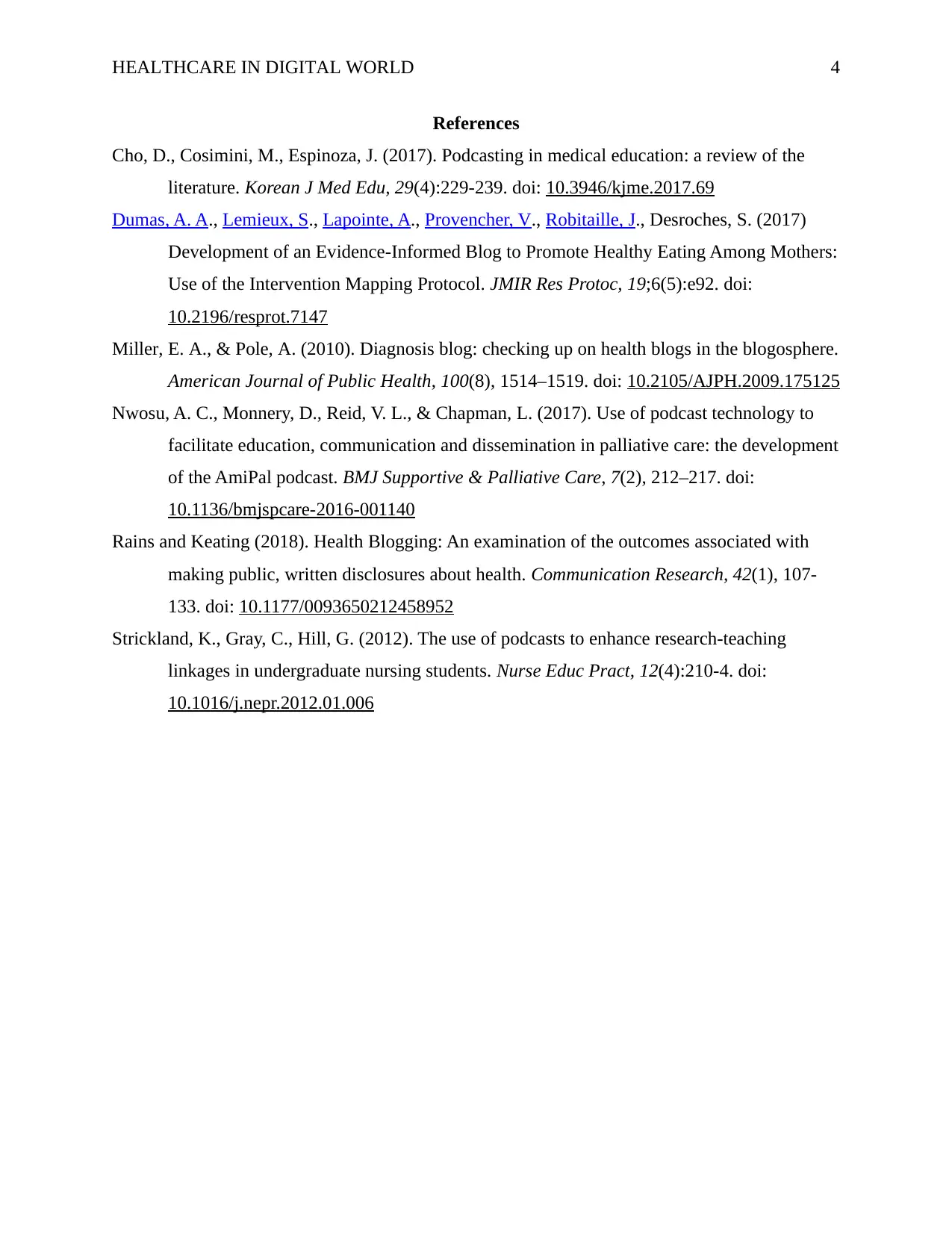Healthcare in the Digital World: Analysis of Digital Media Postings
VerifiedAdded on 2022/08/22
|4
|1199
|19
Report
AI Summary
This report analyzes the impact of digital media, specifically blogging and podcasting, on health education and clinical practices within the healthcare industry. The analysis begins by examining the effectiveness of blogging in promoting health education, highlighting its potential to enhance knowledge and improve professional practices. It also addresses the reliability of information provided in health-related blogs, considering the qualifications of the authors and the potential for misinformation. The report then explores how blogging supports clinical quality by improving professional education, patient education, and care, while also cautioning against the negative effects of unverified content. Finally, the report assesses the role of podcasting in evidence-based practice, emphasizing its contribution to enhancing practical skills and the limitations associated with its use. The author provides references to support the findings and emphasizes the importance of verifying information from digital sources to ensure the quality of healthcare practices.
1 out of 4




